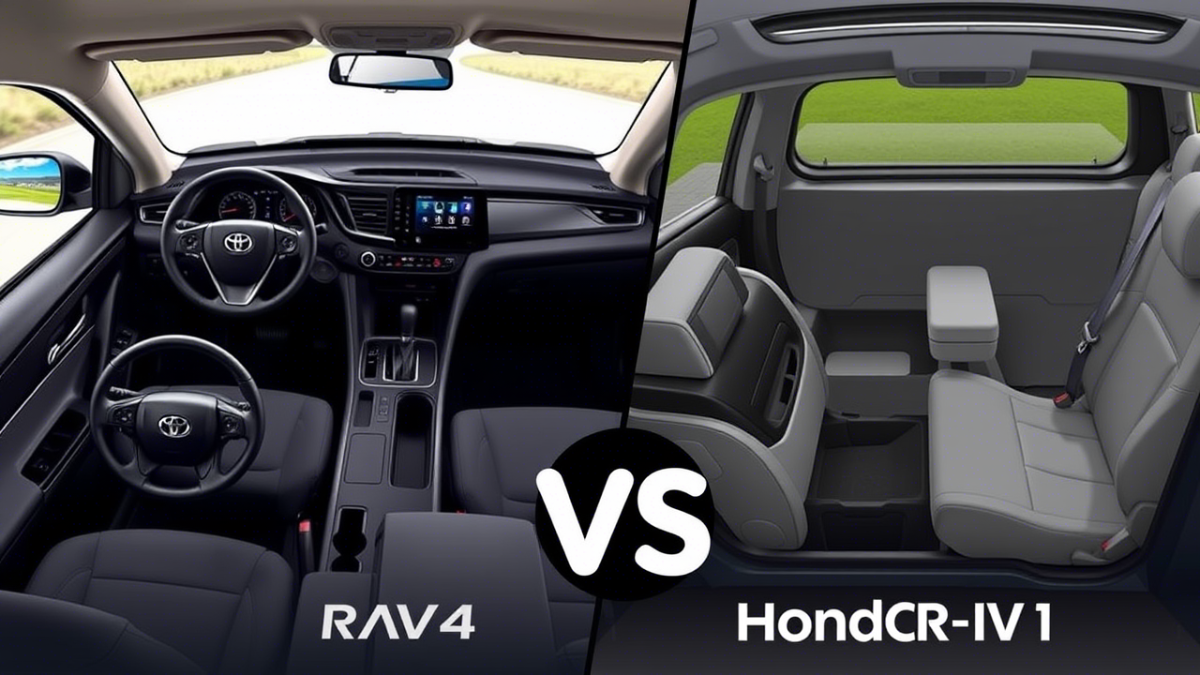Regarding compact SUVs, two names consistently rise to the top of the list: the Toyota RAV4 and the Honda CR-V. Both vehicles have earned their reputations as reliable, practical, and versatile options for families, commuters, and adventurers alike. Choosing between them can be daunting, especially when both models are well-rounded. To help you make an informed decision, this article dives deep into the differences and similarities between these two popular SUVs.
Design and Exterior Appeal
The exterior design of any vehicle plays a significant role in its appeal, and both the RAV4 and CR-V offer unique aesthetics. The Toyota RAV4 takes a bold approach, with sharp lines, aggressive front grilles, and a rugged stance that suggests off-road capability. Its design caters to those who want an SUV that looks adventurous and ready for action.
On the other hand, the Honda CR-V opts for a more refined and understated appearance. Smooth curves, a sleek profile, and subtle detailing give the CR-V a polished look that appeals to buyers seeking elegance over edginess. While the RAV4 screams adventure, the CR-V whispers sophistication.
Ultimately, the choice between the two depends on personal preference. If you resonate with a bold and adventurous aesthetic, the RAV4 might be the better choice. The CR-V could be the ideal match for those who prefer subtlety and class.
Interior Comfort and Space
Step inside either vehicle, and you’ll find spacious interiors designed for comfort. The Toyota RAV4 offers a cabin that blends modern technology with rugged charm. The interior materials are durable and functional, though some critics argue that they lack the premium feel found in competitors. Rear legroom is ample, and the cargo space behind the second row measures 37.6 cubic feet, expanding to 69.8 cubic feet with the seats folded down.
The Honda CR-V counters have a slightly more upscale interior. Soft-touch materials, thoughtful design elements, and a driver-centric layout create a cosy yet refined environment. The legroom in the rear is somewhat better than in the RAV4, making long trips more comfortable for passengers. Cargo capacity is also impressive, starting at 39.2 cubic feet and increasing to 75.8 cubic feet with the rear seats folded.
Both vehicles excel in providing ample room for passengers and gear, but the CR-V edges ahead slightly in terms of overall comfort and refinement.
Performance and Driving Dynamics
Under the hood, the Toyota RAV4 and Honda CR-V offer distinct driving experiences. The RAV4 has a 2.5-litre four-cylinder engine producing 203 horsepower and an eight-speed automatic transmission. Front-wheel drive is standard, while all-wheel drive is available as an option. The RAV4 Hybrid variant adds electrification, improving fuel efficiency without sacrificing performance.
The Honda CR-V, meanwhile, features a turbocharged 1.5-litre four-cylinder engine generating 190 horsepower. It’s mated to a continuously variable transmission (CVT), which provides smooth acceleration and efficient power delivery. Like the RAV4, the CR-V offers front-wheel drive as standard and optional all-wheel drive. A hybrid version of the CR-V is also available, offering even greater fuel economy.
Driving dynamics differ between the two. The RAV4 feels more planted and stable, thanks to its taller ride height and robust suspension system. This makes it an excellent choice for light off-roading or tackling uneven terrain. Conversely, the CR-V delivers a smoother and quieter ride, excelling in urban environments and highway cruising.
Technology and Infotainment
Modern SUVs are expected to come equipped with cutting-edge technology, and neither the RAV4 nor the CR-V disappoints in this regard. The Toyota RAV4 boasts an intuitive infotainment system housed within an 8-inch touchscreen display. Apple CarPlay and Android Auto come standard, ensuring seamless smartphone integration. Higher trims add navigation, wireless charging, and a premium JBL audio system.
The Honda CR-V’s 7-inch touchscreen interface matches this tech-savvy approach. It remains user-friendly and responsive while slightly smaller than the RAV4’s display. Standard features include Apple CarPlay, Android Auto, and Bluetooth connectivity. Upper trims introduce satellite-linked navigation, a wireless phone charger, and a high-end audio system.
Both vehicles prioritize safety through advanced driver-assistance systems. Toyota Safety Sense 2.0 is included in every RAV4 model, offering adaptive cruise control, lane-keeping assistance, automatic emergency braking, and more. Similarly, Honda Sensing equips the CR-V with comparable features like collision mitigation braking, road departure mitigation, and traffic sign recognition.
Fuel Efficiency and Environmental Impact
Fuel efficiency is often a key consideration for SUV buyers, and both the RAV4 and CR-V perform admirably in this area. The non-hybrid RAV4 achieves an EPA-estimated 27 mpg in the city and 35 mpg on the highway with front-wheel drive. Opting for all-wheel drive reduces these figures slightly. The RAV4 Hybrid, however, shines with ratings of up to 41 mpg combined.
The Honda CR-V also posts competitive numbers. With front-wheel drive, the turbocharged engine returns 28 mpg in the city and 34 mpg on the highway. All-wheel drive drops these figures marginally. The CR-V Hybrid surpasses its gas-only counterpart, achieving up to 38 mpg combined.
Both vehicles’ hybrid variants present compelling options for eco-conscious drivers. However, the RAV4 Hybrid has a slight edge in terms of overall fuel economy.
Pricing and Value Proposition
Affordability and value are crucial in the decision-making process. The Toyota RAV4’s base price is around $27,000, with higher trims reaching upwards of $38,000. Adding the hybrid powertrain significantly increases the cost, but reduced fuel expenses enhance long-term savings.
The Honda CR-V begins at approximately $26,000, making it slightly more affordable than the RAV4. Fully loaded models can exceed $37,000. As with the RAV4, opting for the hybrid version raises the sticker price but improves fuel efficiency.
Resale value is another essential factor to consider. Historically, Toyota retains its value better than Honda, giving the RAV4 a potential advantage in the long run. Warranty coverage is similar for both brands, with three-year/36,000-mile basic warranties and five-year/60,000-mile powertrain warranties.

FAQs Section
Which SUV has better off-road capabilities?
The Toyota RAV4 generally outperforms the Honda CR-V in off-road scenarios. Its available all-wheel-drive system and more rigid suspension setup make it more capable of handling rough terrain than the CR-V, which prioritizes on-road comfort.
Are maintenance costs higher for one model over the other?
According to industry studies, maintenance costs for both vehicles are relatively similar. However, Toyota typically ranks slightly lower in repair expenses. The RAV4’s long-term reliability prevents this, which may translate to fewer unexpected repairs.
Can I tow with either vehicle?
Yes, both the RAV4 and CR-V can tow small loads. The RRAV has a maximum towing capacity of 3,500 pounds, while the CCR canttoward1,500 pounds. If towing is a priority, the RAV4 is the clear winner.
Is there a plug-in hybrid option available?
Only the Toyota RAV4 Prime offers a plug-in hybrid variant, which provides an electric-only driving range and exceptional fuel efficiency. The Honda CR-V does not currently have a plug-in hybrid model.
Which vehicle is safer?
The RAV4 and CR-V scored top marks in crash tests conducted by the Insurance Institute for Highway Safety (IIHS). Advanced safety features are standard across all trims, making either vehicle a secure choice for families.
How do the warranties compare?
Warranty coverage is nearly identical for both manufacturers. Each brand provides a three-year/36,000-mile basic warranty and a five-year/60,000-mile powertrain warranty. Extended protection plans are available for purchase.



